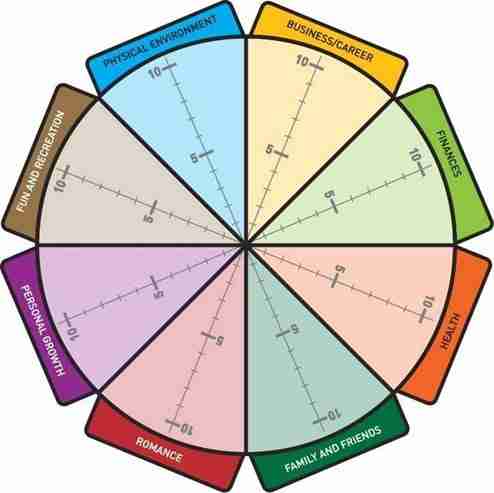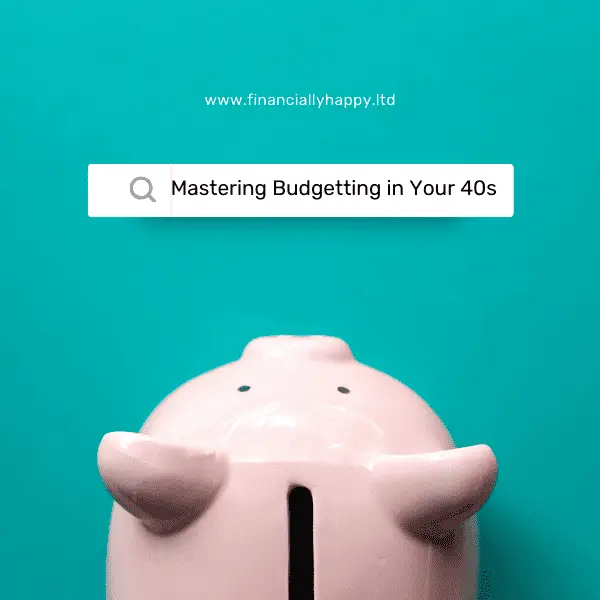Life planning examples. 3 ways to create enormous positive change in your life
If life isn’t quite panning out as you thought, would a few life planning examples help turn it around?
If you reach your 40’s, you might find that a few things have gone your way and a few others not so.
What do you hope for the rest of your life, however long that might be, and how are you going to make it happen?
If you don’t plan your life or attempt to steer it in the direction/s you would like it to go, someone else will. And it may not be a place you want to be.
Read on to hear about 3 life planning examples that will help you achieve more of what you want, even if you have to zig-zag to get there.
If you don’t design your own life plan, chances are you’ll fall into someone else’s plan. And guess what they have planned for you? Not much.
What is a life plan?
A life plan is a plan for what you want to achieve in life and how you might do it.
The planning process is where you get to explore what is important to you and those you love and what things you want to achieve the most.
The planning process is more important than the plan as this is where you can figure out what is most important to you in all areas of your life and prioritise over others.
What is superficially “important”, and what is going to make a difference in your life.
Sometimes there is a little tension around the word goals as who knows what they want from day to day, year to year, it keeps changing.
If you don’t like goals, try best guesses for a great life.
A plan might include
- What are your goals/best guesses in every area of your life?
- What might you regret missing out on?
- Where are you right now?
- What or where do you want to be in 1,3,5, or more years.
- What is the gap between your goals and reality and the actions you need to take to bridge them.
- Problems, questions, and roadblocks you might encounter and how to get over, under or around them
Why is a life plan important?
If you have no plan, you rely on luck or fate to get you to the place you want to go or at least an OK place.
Do you feel lucky?
Of course, we all have luck now and again but over a lifetime?
Luck is not a plan.
How much time do you spend?
- Planning a holiday
- Planning a night out
- Purchasing your next phone, car, house
You probably spend a lot of time figuring out things like the best one for price, comfort, ease etc., but how much time do you spend planning something as important as your life?
Without a life plan, you’re likely to get a few lucky breaks but generally end up someplace where you didn’t quite want to be. Someplace suboptimal.
If you don’t know where you are going, you’ll end up someplace else
What are your future plans in life?
What do you hope to become, do and have in your life now and in the future?
Tricky questions.
It’s sort of easy to think about the things you would like to do and have.
- Home movie theatre
- Massive house (obvs)
- Climb Manchu Pichu
- Visit Japan
- Play the Ukulele
- Learn Spanish
- Bake good bread
But what would I like to be? Hmmm, that’s heavy stuff lets stick to the buying of things.
Figuring out what you want to be or become is where the real change will happen because it will lead to you doing and then having what you wish to also.
Potential goals/guesses you might have
- Getting married and or starting a family
- Getting fit once and for all
- Finding a job or passion project, you love
- Continuing your education for career, business or just for fun
- Volunteering locally or internationally
- Having lots of leisure time with friends and family doing exciting things.
- Finding and pursuing a passion or purpose in your life.
- Achieving financial stability and then independence
Thinking over what would make your life great, looking forward, and one day backwards will help give you an idea of what a life well lived looks like.
Don’t borrow someone else’s plan. Develop your own philosophy, and it will lead you to unique places.

How do you draw a life plan?
Here are three life planning examples you could use to plan out your ideal life.
- Identifying your Goals
- Tacking Action
- Understanding your Means and where you are now.
- Executing the plan
How to create a life plan: A personal life plan example
A good life plan example should include the following:
1. Career Goals – What do you want to accomplish in your career? What are your long-term and short-term goals?
2. Financial Goals – What do you want to achieve financially? How much money do you need to be happy? What is your savings goal?
3. Personal Goals – What do you want to achieve personally? What are your goals for your health, relationships, and hobbies?
4. Education Goals – What do you want to learn? What are your goals for furthering your education?
5. Retirement Goals – What do you want to achieve in retirement? How do you wantto spend your time and with whom?
6. Support Network – Who is part of your support network, including family, friends, colleagues, and mentors? How can these people help you achieve your goals?
7. Action Plan – Finally, create an action plan for implementing your life goals, including steps that you will take and timelines for achieving your objectives.
With a clear plan and a commitment to follow through, you can achieve any goal that you set for yourself.
The SMARTY plan
So, if you have identified your goals/best guesses, one way to start planning is to look at your current reality.
Action 1: Review the core areas of your life to see how they are going. This might also help identify the areas that need the most attention and priority.
The below diagram is one such review process often referred to as the wheel of life. You can, of course, change the sections to match your life and priorities, but here are a few ideas to begin with.
You can score the main areas of your life from 1= not so good to 10=the best it can be.

Action 2: Here is where you look at the areas you would most like to change or those you feel will most impact your overall life.
This is a prioritisation and focusing exercise.
Which area of your life if you were able to make serious progress in would make many of the other areas of your life fall into place
- Health
- Income
- Relationships
- Education
Action 3: Once you have these focus areas write a vision statement that sounds like you have achieved the goal in every way possible.
What does it look like, what are you feeling, doing, and who are you with?
This is part of your why statement, i.e., why you want to achieve it and what it looks like when you have reached it.
Keep these vision statements handy and review them regularly. Updating as and when things change or become clearer.
Action 4: SMARTY. If you have done any sort of project management, you will have likely heard of SMART indicators
- Specific: What exactly do you want to achieve
- Measurable: How will you know when you have reached it? Is it a number or something else?
- Achievable: Do you believe you could make it happen?
- Realistic: Is it possible to reach the goal? If not, what might need to change?
- Time-based: When do you think/want it to be achieved?
And a little extra one
- JoY: How can you make the process enjoyable?
Action 5: Start the plan, review and adjust as necessary.
He who fails to plan is planning to fail.
The Fear setting plan
This comes from Tim Ferris of the “4 Hour work week” fame.
Here when thinking of something you want, you set out your fears about what might go wrong and how to overcome them.
Imagine there is something you want to try, do or start. But you are terrified of it all going wrong.
You could forget about your dreams, ignore the problems or tackle the challenges head-on.
Step 1: Defining what could go wrong and what you could do about it might help settle your nerves.
|
Define your fears |
How could you prevent it from happening |
How could you repair from is going wrong |
|
My side hustle will fail |
Keep the day job for now Build up my savings |
Keep CV up to date Stay friends with colleagues and work contacts (don’t burn bridges) |
Step 2: Consider the potential benefits of taking action
What might be the potential advantages of attempting this action or even just a particle success?
These could be
- More income
- Learn a new skill/s
- Do something you enjoy
- Never wonder what could have been
Step 3: Consider the costs of inaction
What might be the costs of not trying?
- Financial
- Emotional
- Social
- Physical
- Etc
What might these costs be in 6 months, 1 year and 3 years?
This process should help you get further clarity on what’s most important to you. What good looks like and how to overcome or recover from things going wrong..
Those who plan do better than those who do not plan, even should they rarely stick to their plan.
The GAME Plan
Step 1: This process starts with looking at GOALS in every area of your life.
- What does good look like to you?
- What would make a fundamental change in your life?
- If you were looking back, what would you regret not being, doing or having over your life?
A few goal areas you could look at:
Here are a few areas where you might have goals or things to aim for.
- Health and fitness (complete that triathlon)
- Recreation and hobbies (that puzzle isn’t going to make itself)
- Family and Friends (OK, the kids can come to Disney land also)
- Romance and Relationships (this year, they will be mine!)
- Finance and net worth (this time next year, we will be millionaires or a bit closer)
- Career and business (is this the year to launch your side hustle?)
- Personal development (Ukulele fireside sing-alongs?)
- Spiritual goals (is it time for that silent retreat?)
Fashion the above into one or a few vision statements of your ideal life.
Place it in a prominent place and look at it regularly.
Step 2: Actions: thinking about your goals what actions are you going to need to do to achieve them
List all the things that you are likely to need to do, have and become to achieve them.
- Get up earlier
- Get skilled up
- Create a positive open mindset
What problems or roadblocks are you likely to encounter?
|
Problems, challenges roadblocks |
Prevent, mitigate or overcome |
|
Fear |
Have savings in place, look for a coach, mentor or good friend. |
|
Procrastination |
Set a schedule for your work, pick the task with the most benefit, pick just 3 things to do every day. Set a time for procrastinating and a time for doing stuff. |
|
Prioritisation |
Make the best choice you can with the information you have at the time and do one thing and then another. |
|
Money |
Start saving now, earn extra income, borrow it |
|
Knowledge |
Find the right people to talk to, books to read, podcasts to listen to, YouTube videos to watch |
Step 3: Means. What resources do you currently have to reach your goal?
Do you know your numbers?
- Your current net worth
- Income and expenditure
- Savings rate
- Your freedom number when work becomes optional
What are the gaps between where you are not and where you want to be?
Here you would then look where your means going to come from.
Your current employment and or can you create additional sources of income?
If you were to work on a side hustle using the Ikigai principles, would that get you closer to your ideal life?
- Something you love doing
- Something you have skills in
- Something people will pay you for
- Something the world needs.
Creating your own or another source of income if it pays more than your day job and especially if you can turn it into a passive source of income might dramatically change your life.
Passive income would be something that doesn’t require a lot of your time (OK, after you have set everything up)
- Selling e-products online
- YouTube videos
- Rental properties
- Online courses
This process is looking at the business of you. How could you improve your means either in the job you have or the income/s you could create?
And in this creation could this also achieve more of your goals, i.e., doing something you really love and getting paid for it.
Step 4: Execute the plan.
Now you need to plan out when you will achieve everything.
A diary or a large wall planner will be handy in this process.
Map out when you will work on each area of your goals.
Set out the daily, weekly, monthly and yearly actions in a sequence that helps build momentum.
You can check yourself now and again. Is this action helping or a distraction from what I want to achieve?
Your process might well be your key to success; you would need to design your recipe for success, but it might look something like this
- Get up 1 hour earlier and plan the day
- Spend 45 mins a day on your most important task.
- Sign up for a course to get the skills and knowledge you need.
- Continue to work on your mindset – it can work, and you can find a way to make it work.
- Review each day, week and month to see what went well and what you might change next time.
The reason why most people face the future with apprehension instead of anticipation is because they don’t have it well designed!
FAQ: How to plan your life
How to create a life plan?
Here’s an example of a life plan outline
1. Evaluate your life goals
2. Create a timeline for achieving your goals
3. Outline the steps you need to take to achieve each goal
4. Make a budget and stick to it
5. Stay motivated and focused on your goals
6. Celebrate your successes along the way!
Use the above to help you in creating a life plan.
Why create a life plan?
The reason to create a life plan is to make sure you are living and achieving the lifestyle you really want not just the one that is happening to you.
If you want to have an extraordinary life, you must do extraordinary things and make time to get them done. You need a life plan. Not set in stone but your best guesses with actions to make them happen and review and revise as regularly as appropriate.
What are some good life plan ideas?
Developing a life plan is about figuring out what good means to you.
It’s likely to include things around your health, wealth, and happiness.
If you improved these areas of your life would things get better?
Within these areas, travel, friends, family, education, work, and volunteering may be at different stages of your life.
Why leave your life to chance – Start planning for what you do want.
How to plan your life financially
First figure out your goals, and what would make your life great.
Figure out the actions will you need to take to reach them.
Calculate what money you need to save or create to make it happen.
Execute your plan review and revise as you go on.
Summary: Life planning examples. 3 ways to create enormous positive change in your life
A life plan is a way to set out what you want to achieve in life or at least your best guess and how to go about it.
It’s a way to break down seemingly huge goals into bite-size chunks.
As you make progress step by step, you will feel that
You can use the SMARTY method looking at the specific, measurable, achievable, realistic, timebound and joyful process to lay out what’s most important to you.
You could use the fear-setting method from Tim Ferris, where you look at your worst fears for a potential goal or change of direction and work out what could go wrong and how to put it right.
Or you could use our GAME Plan method, which incorporates part of the above methods to look at:
- Goals in every area of your life,
- Actions you will need to undertake to reach them as well as get around problems and roadblocks.
- Means: what means do you currently have and need to create to reach your goals
- Execution of the plan, what will you do first, second and third, and then review what is working well and not so.
With a life plan, you have all you need to make massive positive changes in your life.
How long are you going to wait to design your ideal life plan?
I remember saying to my mentor, ‘If I had more money, I would have a better plan.’ He quickly responded, ‘I would suggest that if you had a better plan, you would have more money.’ You see, it’s not the amount that counts; it’s the plan that counts.
Well, there you go; those are my thoughts on life planning examples; let me know yours in the comments below.
Thanks for dropping by.
If you’ve made it this far, congratulations! You’re already taking steps towards a healthier financial future. But maybe you’re feeling a bit overwhelmed. Maybe the of budgeting, saving, and investing still makes you break out in a cold sweat. Don’t worry, you’re not alone, and help is available.
At Financially Happy Money Coaching, I understand money isn’t just about numbers. It’s about emotions, behaviours, and life choices. That’s why we’re here to help you take the stress out of money and build wealth that aligns with your values and lifestyle.
Whether you’re just starting out on your financial journey or you’re looking to take your finances to the next level, we’re here to guide you every step of the way. I’ll help you understand your financial behaviours, set realistic goals, and create a personalized plan to achieve those goals.
So, why wait? Start your journey towards financial happiness today. Remember, the best time to start was yesterday. The second best time is now.
Click here to schedule your consultation and let’s make your money work for you, not vice versa. 💪💰
Remember, financial freedom isn’t a destination; it’s a journey. And every journey is easier when you have a guide. So, let’s embark on this journey together and create a financially happy future. 🚀💸
📚 Financial Freedom Resources
- The Ultimate Guide To Building Your Savings to $100,000! 📘 is a transformative book that equips readers with principles, strategies, and the mindset 🧠 needed to reach a $100,000 savings goal 💰. It’s a journey towards financial freedom 🚀, challenging beliefs 🤔, embracing new habits 🔄, and overcoming obstacles 💪.
- How to Manage Your Finances: Your Guide to Financial Freedom 📘 is a comprehensive resource packed with practical advice on budgeting 💰, investing 📈, reducing debt 💳, and building wealth 💎. It’s an essential guide for anyone, novice or experienced, aiming to take control of their financial future and achieve financial independence 🚀.
Remember, self-study is a powerful tool for life and financial transformation. Happy reading! 🎉










